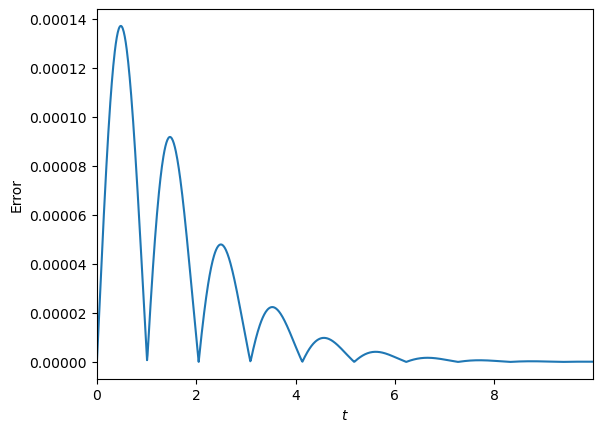Chapter 6 exercise
Chapter 6 exercise#
By applying the central formulae (3.6) and (3.3) to replace the first and second derivatives we obtain
Again, we require two starting points. It is tempting to use the explicit Euler method with the first derivative condition to estimate \(x_1\). However, that method is only first order accurate, so this will contaminate our second order accurate algorithm and produce a result that is only \(\mathcal{O}(h)\) accurate.
We therefore use the \(\mathcal{O}(h^2)\) central differences formula for the boundary condition, which gives:
This relationship involves the solution at the “ghost” point \(x_{-1}\) where \(t=-h\). We do not know the result at this point, but we can solve the problems for \(x_{-1},x_0,x_1\) simultaneously to obtain our starting points.
From (8) we obtain
Substituting for \(x_{-1}\) from (9) and using the boundary condition \(x_0=1\) then gives
from numpy import arange,cos,exp
import matplotlib.pyplot as plt
plt.rcParams['axes.xmargin'] = 0
h=0.01
t=np.arange(0,10,h)
xsol=exp(-t)*cos(3*t)
n=len(t); x=np.empty(n) # Pre-allocate
x[0]=1; # Initial value
x[1]=1-h-4*h**2 # Ghost point
# Central difference rule
for k in range(1,n-1):
x[k+1]=((2-10*h**2)*x[k]+(-1+h)*x[k-1])/(1+h)
# Compare to analytic solution
plt.plot(t,abs(x-xsol))
plt.xlabel('$t$'); plt.ylabel('Error')
plt.show()

